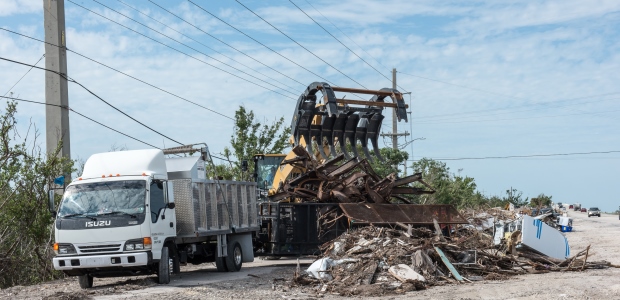
Recovering Assets After a Disaster
One or all of a facility's assets may be compromised or destroyed. Documenting what resources will be available to guard or replace those assets facilitates a timely recovery.
- By Karen D. Hamel
- May 01, 2018
Dealing with the immediate aftermath of a fire, chemical spill, or a natural or manmade disaster is very stressful for employees and impacts not only the facility, but often the neighboring community, as well. When the smoke clears or the storm finally passes, facilities with disaster recovery plans are able to immediately get started with their recovery efforts. Those without plans often struggle to determine the best course of action to take while also dealing with limited availability of scarce resources.
Disaster recovery plans that identify vulnerabilities and key assets as well as specific recovery actions enable facilities to rebound from disasters faster than those who fail to plan. And, because the facility has pre-determined their course of action well in advance and in a less stressful environment, their outcomes have a greater likelihood of succeeding.
Assets include both tangible and intangible things that a facility identifies as having value. Depending upon the circumstances of the disaster, one or all of a facility's assets may be compromised or destroyed. Documenting what resources will be available to guard or replace those assets facilitates a timely recovery.
People
Employees can be impacted in different ways after an emergency. Incidents at the facility, such as fires, explosions, or chemical releases, may result in injuries or deaths. Natural disasters that affect large geographic areas may leave many employees scrambling to deal with their own personal and property losses. Pandemic events can cause a high absentee rate.
Most companies value their employees and claim them as a chief asset. Preparing to meet their needs requires a multi-faceted approach. Involving representatives from human resources and accounting as well as liaisons from insurance companies during planning efforts can help to paint a more realistic picture of everything that may be involved with restoring employees' basic human needs after a disaster.
Establishing clear communication channels for information as well as accountability, instituting Employee Assistance Programs (EAPs), and having policies that allow certain work activities to occur at home can help avoid chaos and allay fears. Planning for emergency payroll, overtime, and temporary staffing needs also can provide a sense of continuity.
Property and Business Operations
Physical damage to work spaces or buildings can be caused by both natural events and man-made disasters. Insurance may cover the cost of a lost building or equipment, but it doesn't typically cover the time it will take to rebuild or replace those lost items. Keeping a record of contact information, part numbers and lead times for suppliers and alternative vendors can help to get replacement items ordered quickly.
In addition to the physical campus, explore how natural disasters may also affect infrastructure—especially roads. Even if a disaster doesn’t impact buildings, if employees and supplies can't reach the facility because roads are impassable, business will still be impacted.
Considering airlifting employee, supplies, and finished products to and from the facility is implausible for most businesses, but more reasonable preparations can be made to help minimize damage to the facility itself. Having adequate fire suppression systems, being prepared for spill response, and installing backup power sources are a few of the most common preparations to help minimize downtime.
Similar to preparing for impacts on the physical facility, having plans to back up essential processes, systems, information technology, and specialized equipment is a necessity. Consider the possibility of shifting work to another facility or backing up and recovering data remotely to aid faster recovery, as well as costs associated with overtime, outsourcing, and expediting supplies to replace raw materials that may be lost or damaged.
Reputation
Brand image is one of the intangible things that can be a bit harder to quantify than the loss of physical items. But, like the loss of a person or a building, there is still an impact.
No one wants their name to be associated with causing a major incident. In this age of mass media and instantaneous sharing on social media channels, information that may have at one time been known only to the immediate community is instantly accessible to almost anyone. Having a media plan and assigning someone as the public information officer can help to ensure that correct information is shared with media channels both during and after an emergency.
Even if the facility is not the cause of an incident, business interruptions can still tarnish a facility's reputation, causing lost sales and revenue. Customers who are faced with longer than normal lead times can quickly become dissatisfied and seek for other suppliers, especially if they use just-in-time ordering.
Because facilities can be impacted by so many different types of emergencies and disasters, it is important to explore and document those possibilities so that plans can be put in place to mitigate them. Having recovery strategies and resources available before they are needed increases employees', customers', and the community's confidence that a facility can remain viable after a disaster.
This article originally appeared in the May 2018 issue of Occupational Health & Safety.